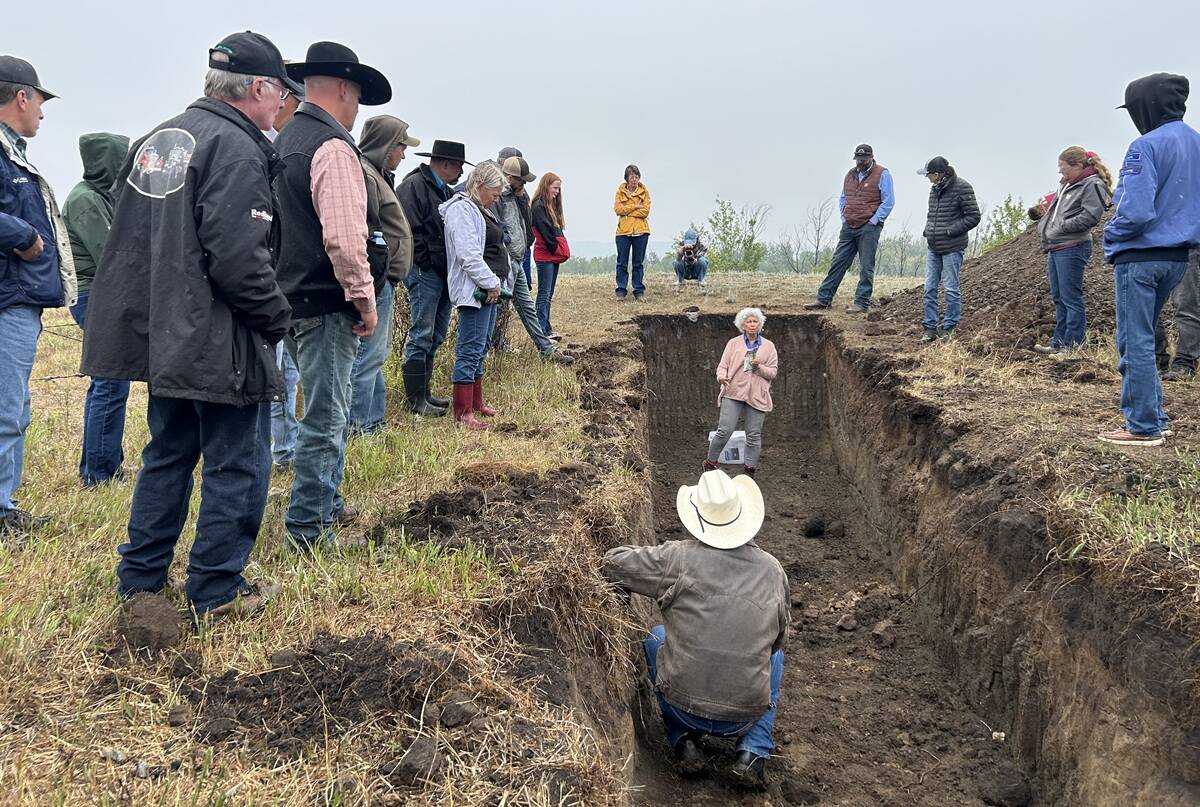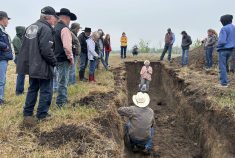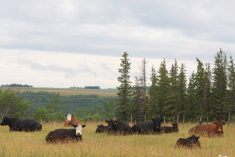When you read the phrase “great leader,” what pops into your head?
I didn’t get to know Reg Schellenberg very well before he passed away last December. But those who did know him often use words such as quiet leadership, gentle demeanour, firm, confident and a good listener when describing his leadership style. It’s fitting that the industry has honoured Schellenberg’s memory by creating a leadership award for the Canadian Cattle Association’s Young Leaders Program (more on that in Newsmakers and CCA Reports).
Read Also

Improving soil health on the ranch
Yamily Zavala, PhD, talks soil health for farmers and ranchers at a grazing club field day at Paradise Hill, Saskatchewan.
For some reason, our society equates loudness with strength in leaders, when it’s often simply a distraction from fear. When I think about the people I’ve worked for, the great leaders weren’t thumping their chests in meetings. They knew how to listen, and they knew how to motivate people to willingly work for a common purpose.
I think we need to expand our picture of leadership. I was fortunate to take in a keynote address by Jody Wilson-Raybould, our former attorney general and federal justice minister, that gave me lots to chew on.
Wilson-Raybould spoke to us about reconciliation and leadership at the International Federation of Agricultural Journalists Congress in Olds, Alta., on Canada Day. One of the first things that struck me was how measured she was, even as she was criticizing governments for focusing on performative, symbolic gestures rather than substantial action.
She also offered a very interesting account of her community’s approach to leadership. Wilson-Raybould is part of the We Wai Kai Nation, of Quadra Island, which is just off Vancouver Island, near Campbell River. She is also known by her Kwak’wala name, Puglaas, which translates to “a woman born to noble people.” That name was given to her by her paternal grandmother, Ethel Pearson, a leader in her own right.
As you may know, her father, Bill Wilson, is a politician, as well as a hereditary chief. Women can be, and are, elected as chiefs — Wilson-Raybould herself was a regional chief, and calmly held her own in that world, according to a Globe and Mail article.
Only men can hold the traditional role of hereditary chief in her culture, she explained to us on Canada Day. However, women do have traditional, hereditary leadership roles. Wilson-Raybould’s hereditary role is as Hiligaxste, which loosely translates to “one who corrects the chief’s path.” The Hiligaxste helps prepare the future chief, or Hamat’sa, for leadership. As the name suggests, one of her tasks is to literally lead the Hamat’sa into the Big House during potlatch ceremonies.
We show them the way, she told us, and it is a metaphor for life.
Do not mistake her respect for tradition as fostering passivity. As a child, she reportedly sat at the dinner table all night when she was told she had to eat her supper before leaving. Wilson-Raybould is not a woman who simply does what she’s told.
Combine that upbringing and emphasis on correcting the path of leadership with her legal background, and you can hardly imagine anyone better suited to become attorney general. Add in Bill Wilson’s interactions and verbal spars with the elder Trudeau, and Wilson-Raybould’s doggedness, and it almost seems like she was fated to hold the highest path-correcting position in the land when the SNC-Lavalin scandal broke. It doesn’t seem like it could have ended any other way.
Wilson-Raybould also spoke about how Canadian society has been divided into silos, which has hampered reconciliation efforts.
“Silos contribute to us operating and making decisions based on false assumptions, rather than a real understanding of each other. If we are going to live side-by-side together — and none of us is certainly going anywhere — understanding our different realities and ways of being is important. The reverse of assimilation, colonialism and racism, it is knowledge, inclusion and equity.”
To make these silos visible, and ultimately transform them, we need people who can go between them, sharing facts and information and stories, she told us. She calls these people the “in-betweeners,” the people who “walk between and translate between the silos. It’s not easy. It takes courage. It demands being uncomfortable.”
Writers and journalists, of course, are in-betweeners. Wilson-Raybould considers herself one, too, moving between different communities. We have several examples of people doing this kind of thing within the beef industry as well. There are people actively connecting Indigenous and non-Indigenous communities. The work of in-betweeners extends beyond reconciliation, too, if you think of the people and organizations working in ag education and public advocacy. Or working with government or conservation groups.
However, being an in-betweener is not easy, as Wilson-Raybould pointed out. Her experience in Indigenous politics was not always valued or heard around the cabinet table, she told us.
“Just as in many Indigenous communities, we sometimes struggle to understand and learn from the experiences of those from the outside,” she said. Again, I think this is likely something many occupying similar roles in agriculture can relate to at times.
While she acknowledged the challenges we still face around reconciliation, Wilson-Raybould also acknowledged the good work that has been done and pointed us toward a constructive path.
“You can show each other and your peers, your neighbours and your governments how to build real relationships and be in communities in ways that communities accept and trust.”
Ask yourself whether you’re being an in-betweener, she said. Are you breaking down silos? Are you uncomfortable? How do we cultivate a culture of “in-betweening?”
All great questions for any leader, I think.
For those interested in learning more about her thoughts on reconciliation, Wilson-Raybould has a new book out, called True Reconciliation: How to be a Force for Change.
















